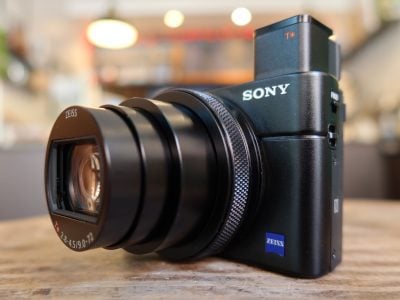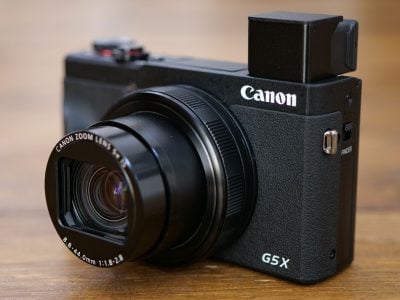Olympus E-520
-
-
Written by Gordon Laing
Olympus E-520 Studio resolution / JPEG and RAW results
Olympus E-520 results continued…
| Support this site by shopping via these links | ||||||||||||||||||||||||||||||||
 |
To measure and compare the Olympus E-520’s resolving power we photographed the Enhanced Digital Camera Resolution Chart with it and a number of rival models, each using their best quality JPEG and default image tone and sharpening settings. We tested the Olympus E-520 with the standard Zuiko Digital 14-42mm kit zoom at all apertures and selected the sharpest result. The crops are taken from the original images, saved as High Quality JPEGs in Photoshop CS2 and presented here at 100%. Each number represents 100 lines per picture height (lpph), so a figure of 20 means a resolution of 2000 lpph. |
Fitted with the Zuiko Digital 14-42mm kit zoom lens at 25mm f8, the E-520 resolved 2150 lpph of horizontal and vertical resolution. While the result looks crisper than the earlier E-510 (possibly aided by a different copy of the kit lens), the resolved detail is the same. Our sample from the E-420 shows a prime lens like the 25mm pancake has the potential to technically squeeze a little more vertical resolution, but there’s little in it. Note: the E-520 and E-420 share the same sensor and processing engine, so the results should be the same when fitted with the same lens. The Canon 450D / XSi manages to resolve slightly greater detail in this test, but again there’s not a great deal of difference in real-life detail as seen on the previous page. So a good result here for the E-520 which manages to deliver a result that’s as good as the best 10 Megapixel DSLRs out there, although models with higher resolutions are taking a small lead in technical tests like these. To see how shooting in RAW affects this test, scroll to the bottom of this page, or head straight over to our Olympus E-520 noise results page where we’ll see how it performs across its sensitivity range next to the Canon 450D / XSi and Pentax K200D. |
Olympus E-520 with Zuiko Digital 14-42mm ED |
Olympus E-510 with Zuiko Digital 14-42mm ED | |
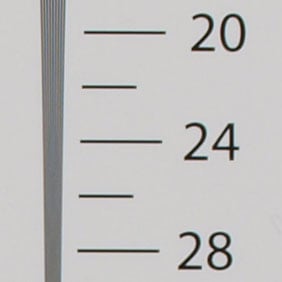 | 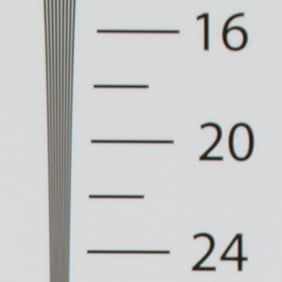 | |
2150 lpph, 14-42mm at 25mm, f8, 100 ISO |
2150 lpph, 14-42mm at 25mm, f8, 100 ISO | |
Olympus E-420 with Zuiko Digital 25mm 1:2.8 |
Canon EOS 450D / XSi with EF-S 18-55mm IS | |
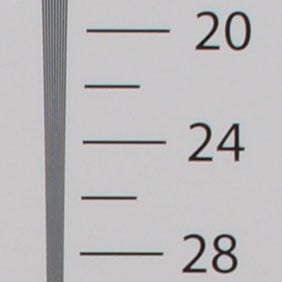 | 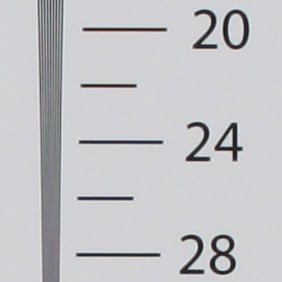 | |
2150 lpph, ZD 25mm, f8, 100 ISO |
2200 lpph, EF-S 18-55mm IS at 35mm, f8, 100 ISO |
Olympus E-520 with Zuiko Digital 14-42mm ED |
Olympus E-510 with Zuiko Digital 14-42mm ED | |
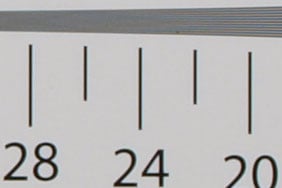 | 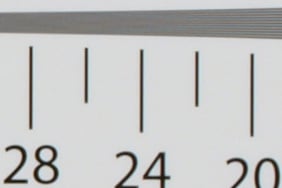 | |
2150 lpph, 14-42mm at 25mm, f8, 100 ISO |
2150 lpph, 14-42mm at 25mm, f8, 100 ISO | |
Olympus E-420 with Zuiko Digital 25mm 1:2.8 |
Canon EOS 450D / XSi with EF-S 18-55mm IS | |
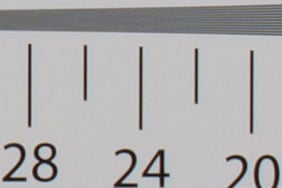 | 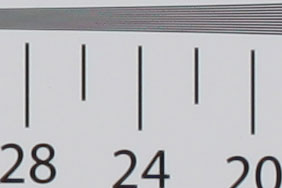 | |
2200 lpph, ZD 25mm, f8, 100 ISO |
2225 lpph, EF-S 18-55mm IS at 35mm, f8, 100 ISO |
Olympus E-520 Studio resolution: JPEG versus RAW
We photographed the test chart in the E-520’s RAW plus Large Fine JPEG mode, allowing us to directly compare images created from exactly the same data. Below are crops taken from the original JPEG file alongside the RAW version, processed in Olympus Master 2.05 using the default settings, saved as a 16-bit TIFF, then opened in Photoshop.
As seen on the previous page, there’s essentially no difference between the processed RAW file and the in-camera JPEG, although again to be fair, the Master software was using the camera defaults.
Now let’s check out the camera’s performance at different sensitivities in our Olympus E-520 noise results page.
Olympus E-520 JPEG with Zuiko Digital 14-42mm ED |
Olympus E-520 RAW with Zuiko Digital 14-42mm ED | |
 | 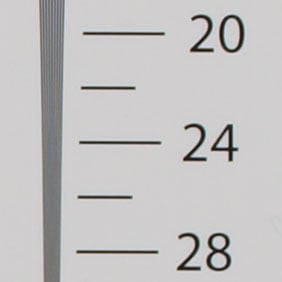 | |
2150 lpph, 14-42mm at 25mm, f8, 100 ISO |
2150 lpph, 14-42mm at 25mm, f8, 100 ISO |
Olympus E-520 JPEG with Zuiko Digital 14-42mm ED |
Olympus E-520 RAW with Zuiko Digital 14-42mm ED | |
 | 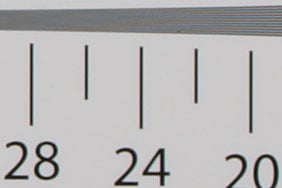 | |
2150 lpph, 14-42mm at 25mm, f8, 100 ISO |
2150 lpph, 14-42mm at 25mm, f8, 100 ISO |
